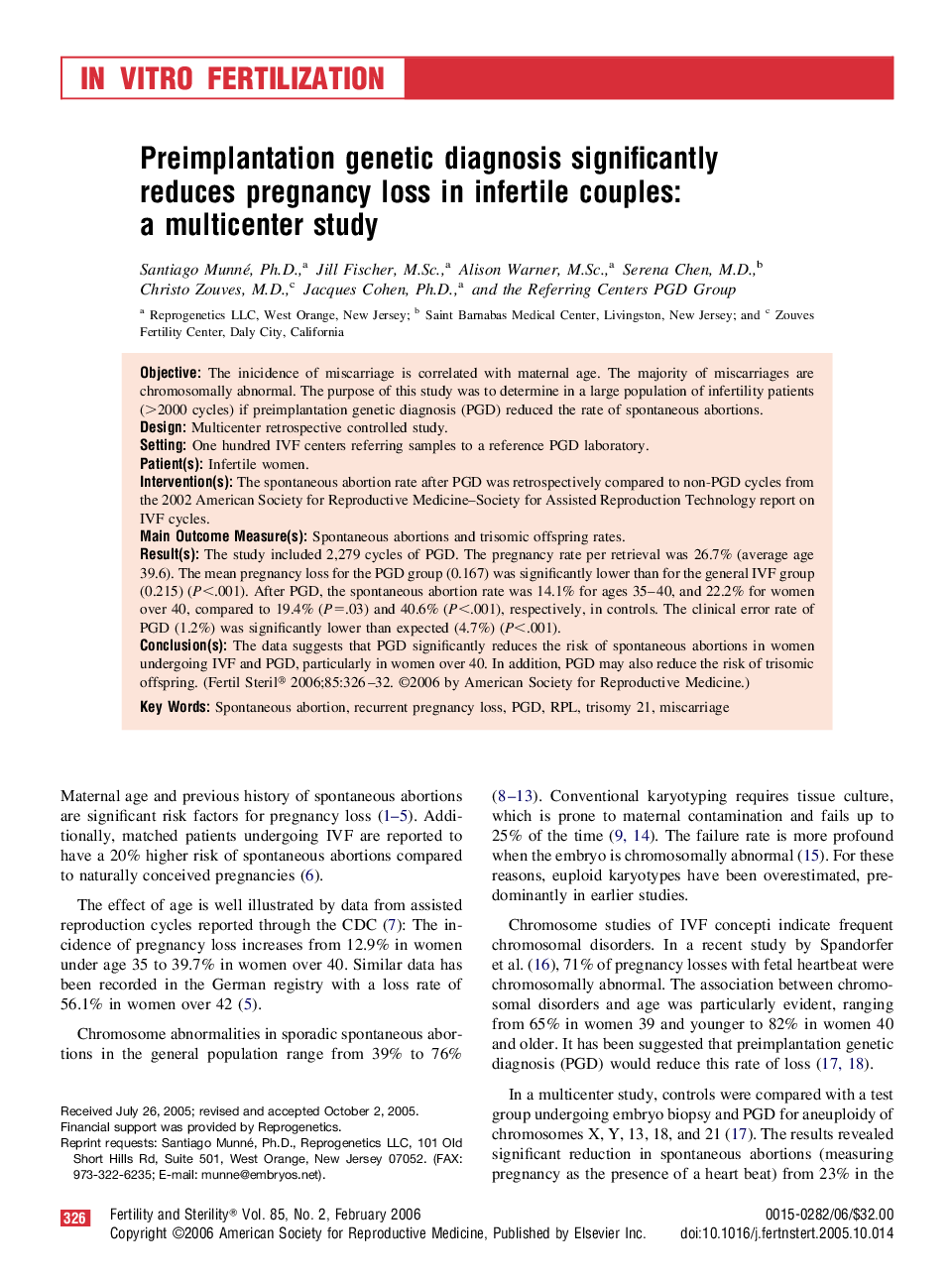| Article ID | Journal | Published Year | Pages | File Type |
|---|---|---|---|---|
| 3940899 | Fertility and Sterility | 2006 | 7 Pages |
ObjectiveThe inicidence of miscarriage is correlated with maternal age. The majority of miscarriages are chromosomally abnormal. The purpose of this study was to determine in a large population of infertility patients (>2000 cycles) if preimplantation genetic diagnosis (PGD) reduced the rate of spontaneous abortions.DesignMulticenter retrospective controlled study.SettingOne hundred IVF centers referring samples to a reference PGD laboratory.Patient(s)Infertile women.Intervention(s)The spontaneous abortion rate after PGD was retrospectively compared to non-PGD cycles from the 2002 American Society for Reproductive Medicine–Society for Assisted Reproduction Technology report on IVF cycles.Main Outcome Measure(s)Spontaneous abortions and trisomic offspring rates.Result(s)The study included 2,279 cycles of PGD. The pregnancy rate per retrieval was 26.7% (average age 39.6). The mean pregnancy loss for the PGD group (0.167) was significantly lower than for the general IVF group (0.215) (P<.001). After PGD, the spontaneous abortion rate was 14.1% for ages 35–40, and 22.2% for women over 40, compared to 19.4% (P=.03) and 40.6% (P<.001), respectively, in controls. The clinical error rate of PGD (1.2%) was significantly lower than expected (4.7%) (P<.001).Conclusion(s)The data suggests that PGD significantly reduces the risk of spontaneous abortions in women undergoing IVF and PGD, particularly in women over 40. In addition, PGD may also reduce the risk of trisomic offspring.
